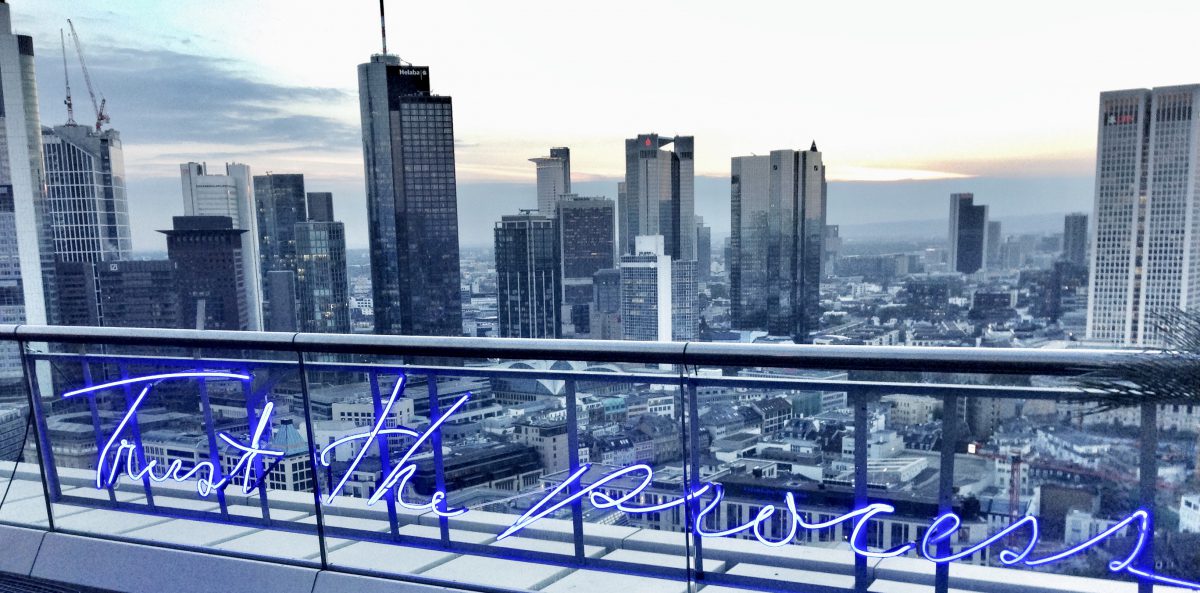“A pestilence does not have human dimensions, so people tell themselves that it is unreal, that it is a bad dream that will end,” Albert Camus wrote in The Plague.
 This rings very true, as we are in the midst of the COVID-19 crisis that is currently developing. Change is hard. And today most of us find it hard to bear that something so invisible, so incomprehensible to us can have such a major impact on our plans and our lives.
This rings very true, as we are in the midst of the COVID-19 crisis that is currently developing. Change is hard. And today most of us find it hard to bear that something so invisible, so incomprehensible to us can have such a major impact on our plans and our lives.
As someone who advises and coaches organizations and their people how to move through change, seeing how we are trying to make sense of what is happening with COVID-19 as it unfolds has many parallels. Both are characterized by high uncertainty — about what is happening and what we should do about it, as individuals as well as a collective.
So I just wanted to write down and share some of my thoughts:
Understanding our brain and how it deals with change can help us better understand how we can deal with it. Neuroscience is a great place to start. Most of us know, that for our brain, the goal is survival. And it is very good at trying to meet that goal. To survive our brain needs to do two things; avoid threats like the saber-toothed tiger and to seek rewards like food or shelter. Both matter – but a threat is far more important. We can go without food and shelter for a while (although judging by the panic buying going on in my local supermarket you’d think otherwise). But if that tiger gets us…..
Our brain is a prediction machine always trying to make sense what is going on, what is happening to us, what it can do to protect us and how to make sure we survive.
So a feeling of uncertainty (or “threat” in fight or flight terms) leaves many of us thinking less clearly and having difficulties controlling our emotions. We start to perceive the world around us as much more hostile. This is where the uncertainty causes anxiety, leaving people struggling and asking many questions about what is happening, what we could or should do. Studies have shown, that we are more comfortable with certainty about a negative outcome than dealing with uncertainty itself.
With COVID-19, the facts around the situation are highly dynamic, there is very much we do not know yet. And that is why good and transparent change /crisis communication is key. When people feel there is a void, they try to fill it by coming together to make sense of what is going on which often can turn into the spread of misinformation. This can be dangerous.
The challenge now is to ensure that those who are managing responses from leaders to scientist to journalist diminish bad information, increase a trusting, transparent communication to decrease uncertainty and anxiety, and to make sure people can take the right decisions based on what we currently know is true.
Here are some of my tips for those communicating around COVID-19:
- Keep communicating, talk about facts, debunk misinformation
In times of change and crisis there is no “over communication”. Even if you have shared the story already a dozen times or more, the more people hear, the more they can process and understand. Remember that not everyone is always on the same level of understanding about what is happening yet. Talk about facts and debunk misinformation (constantly). It’s more important than ever to be clear and thorough, even if you feel like you’re repeating yourself again and again. Repetition in times of change is actually a good thing! - Use clear language and include context
No one likes jargon. How many people truly understand what the term “community transmission” means or what quarantine is? So explain things in clear language. Also provide context in helping people understand more about how science works (what a great opportunity!) – from immune systems to scientific publishing, these subject are not only vital in communicating around COVID-19 but also are fascinating subjects in themselves. - Showcase competence
The world needs to know and to appreciate that, science is a process and real people do science. So showcase these people, but make sure they are truly experts. In times like these it is especially important not to provide false balance. So stop showcasing people like anti-vaxxers or other deniers of scientific facts. - Explain what we do not know yet
When working with change in organizations, I always advise on being as transparent as possible with their communications to alleviate as much uncertainty as possible. This means clearly communicating what we know, what will happen, what will not happen but just as much on what we don’t know yet. People have a lot of questions and it is ok to say that some we cannot answer yet. Just make sure to let them know that there are many people, such as researchers and scientists, who are working hard on finding answers we need. - Acknowledge fears and uncertainties.
The worst thing I read or hear in the media (on – and offline) currently are the words “don’t panic”. Many people are worried and that is understandable in any situation where we cannot predict how it will end. So be respectful and acknowledge them and what they are feeling. Then provide these people with what reliable information we have to date , so that we can help them process the changes happening in a better way.
Yes, COVID-19 is a worldwide health crisis. It means that each and everyone of us needs to undertake specific actions to protect ourselves, our families, our friends, our communities and the world. To master the coming changes, it will be critical to have good, constant, factual information that we can trust, to inform the actions that we need to take. That is why I would urge all leaders and communicators to use the right kind of communication that will help us in best responding to COVID-19 on an individual and collective level.
PS for those who like music, dancing, fun and positivity, check our my collaborative playlist on Spotify around songs in times of COVID-19 “Desinfect yourself, before you wreck yourself”

